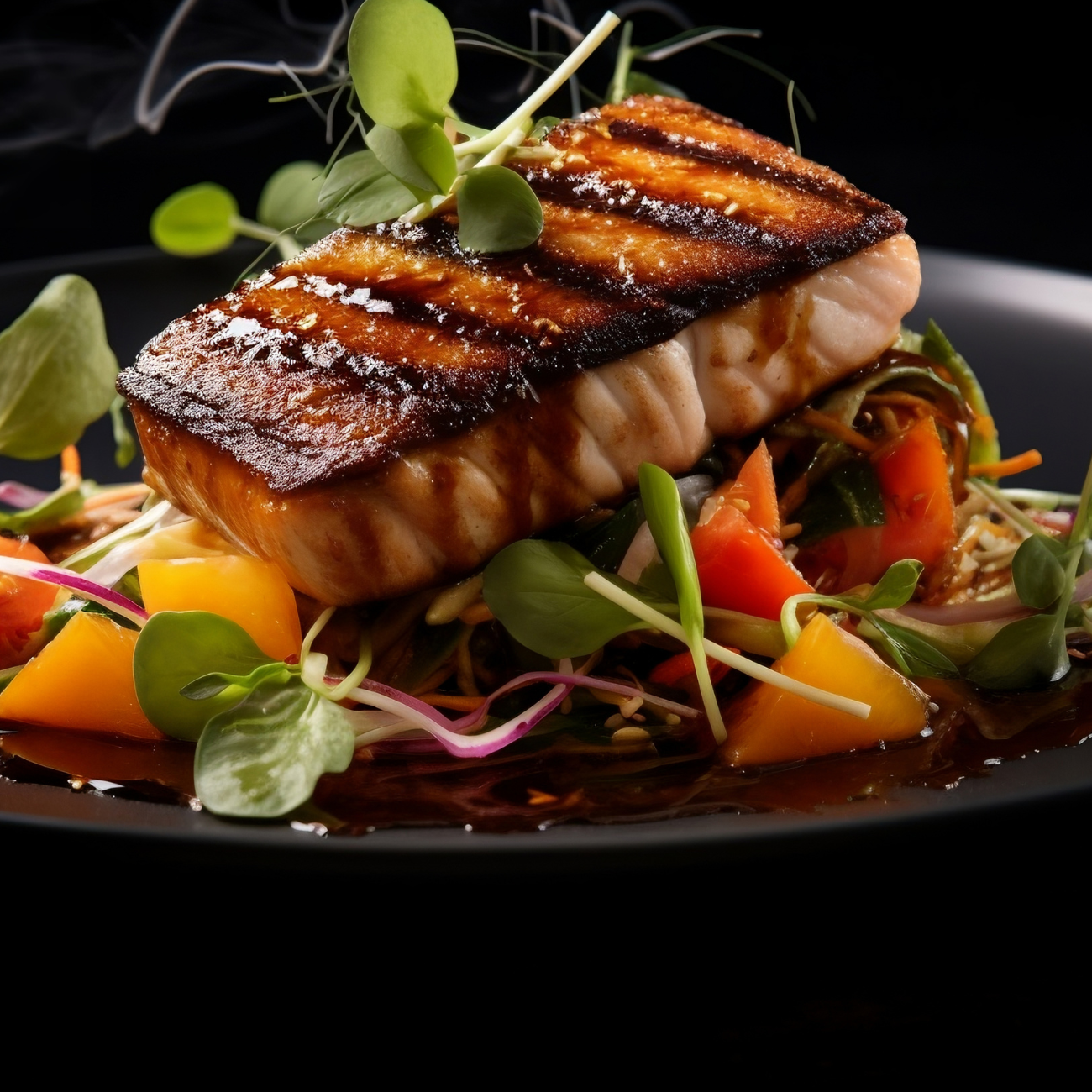Introduction:
Savoring the tropics isn’t just about the warm sun and swaying palm trees; it’s also about indulging in the rich and diverse flavors that this region has to offer. One such culinary delight is Mahi Mahi, a fish known for its firm texture and mild, sweet taste. Paired with a vibrant coconut cilantro sauce, this dish brings together the essence of the tropics in a single bite. In this article, we delve into the origins of Mahi Mahi, explore the key ingredients of the coconut cilantro sauce, and provide a step-by-step guide to creating this mouthwatering dish in your own kitchen.
Mahi Mahi: A Taste of the Tropics
Mahi Mahi, also known as dolphinfish or dorado, is a species of fish found in warm waters around the world. Its Hawaiian name, “Mahi Mahi,” translates to “strong strong” in Polynesian, a fitting descriptor for its powerful swimming abilities. With its distinctive iridescent colors of green, blue, and gold, Mahi Mahi is not only a feast for the taste buds but also for the eyes.
Native to the waters of the Pacific, Atlantic, and Indian Oceans, Mahi Mahi has been a staple food source for coastal communities for centuries. Its versatility in cooking, coupled with its abundance in tropical waters, has made it a prized catch for fishermen and a favorite ingredient in cuisines around the globe.
Coconut Cilantro Sauce: A Burst of Flavor
At the heart of this tantalizing dish lies the coconut cilantro sauce, a concoction that perfectly complements the delicate flavor of Mahi Mahi. This sauce is a harmonious blend of creamy coconut milk, zesty lime juice, fragrant cilantro, and a hint of spicy chili. Each ingredient contributes its own distinct flavor profile, resulting in a sauce that is both refreshing and full of depth.
Coconut milk serves as the base of the sauce, imparting a rich and velvety texture that coats the palate with each spoonful. Fresh cilantro adds a burst of herbaceousness, while lime juice provides a tangy brightness that cuts through the richness of the coconut milk. A touch of chili adds a subtle kick of heat, elevating the sauce to new heights of flavor complexity.
Creating the Perfect Mahi Mahi with Coconut Cilantro Sauce
Now that we’ve explored the star ingredients of this dish, let’s dive into the process of bringing it all together. Here’s a step-by-step guide to creating the perfect Mahi Mahi with coconut cilantro sauce:
- Selecting the Freshest Mahi Mahi: When it comes to seafood, freshness is key. Look for Mahi Mahi fillets that are firm to the touch, with a bright and shiny appearance. Avoid any fillets that have a strong fishy odor, as this is a sign of age.
- Preparing the Coconut Cilantro Sauce: Start by finely chopping fresh cilantro leaves and mincing a clove of garlic. In a saucepan, combine coconut milk, lime juice, chopped cilantro, minced garlic, and a pinch of chili flakes. Bring the mixture to a gentle simmer over medium heat, stirring occasionally, until it has thickened slightly. Season with salt and pepper to taste.
- Cooking the Mahi Mahi: Season the Mahi Mahi fillets with salt, pepper, and a squeeze of fresh lime juice. Heat a skillet over medium-high heat and add a drizzle of olive oil. Once the skillet is hot, add the Mahi Mahi fillets and cook for 3-4 minutes on each side, or until they are golden brown and cooked through.
- Plating and Serving: To serve, spoon a generous amount of coconut cilantro sauce onto each plate and place a cooked Mahi Mahi fillet on top. Garnish with additional chopped cilantro and a wedge of lime for an extra burst of freshness. Pair with your favorite tropical side dishes, such as coconut rice or grilled pineapple, for a complete island-inspired meal.
Conclusion:
In conclusion, savoring the tropics is as much about the culinary experience as it is about the stunning landscapes and warm hospitality. Mahi Mahi with coconut cilantro sauce encapsulates the essence of tropical cuisine, with its vibrant flavors and fresh ingredients. Whether enjoyed by the ocean breeze or recreated in the comfort of your own kitchen, this dish is sure to transport you to a tropical paradise with each delicious bite.
Questions And Answer’s:
- What is Mahi Mahi, and why is it a popular choice for cooking?
Mahi Mahi is a type of fish found in warm waters around the world. It’s known for its firm texture, mild flavor, and versatility in various cooking methods. Its lean flesh holds up well to grilling, baking, or pan-searing, making it a favorite among seafood enthusiasts. - How do you prepare Mahi Mahi with Coconut Cilantro Sauce?
To prepare Mahi Mahi with Coconut Cilantro Sauce, start by seasoning the fish with salt, pepper, and any desired spices. Then, grill or pan-sear the Mahi Mahi until it’s cooked through and flakes easily with a fork. For the sauce, combine coconut milk, chopped cilantro, lime juice, garlic, and ginger in a saucepan. Simmer the mixture until it thickens slightly, then spoon it over the cooked Mahi Mahi before serving. - What are the key flavor profiles in Coconut Cilantro Sauce that complement Mahi Mahi?
Coconut Cilantro Sauce adds a tropical and refreshing flavor to Mahi Mahi. The creamy coconut milk provides richness, while the fresh cilantro adds a bright, herbaceous note. Lime juice adds acidity, balancing the richness of the coconut milk, while garlic and ginger add depth and complexity to the sauce. - What are some serving suggestions for Mahi Mahi with Coconut Cilantro Sauce?
Mahi Mahi with Coconut Cilantro Sauce pairs well with a variety of sides. You can serve it over a bed of cooked rice or quinoa for a hearty meal, or alongside steamed vegetables such as asparagus or broccoli for a lighter option. Garnish with additional chopped cilantro and lime wedges for an extra burst of flavor. - Can Mahi Mahi with Coconut Cilantro Sauce be made ahead of time?
While Mahi Mahi is best enjoyed fresh, you can prepare the Coconut Cilantro Sauce in advance and store it in an airtight container in the refrigerator for up to 2 days. Simply reheat the sauce gently on the stove before serving. Cook the Mahi Mahi just before serving for the best texture and flavor.

